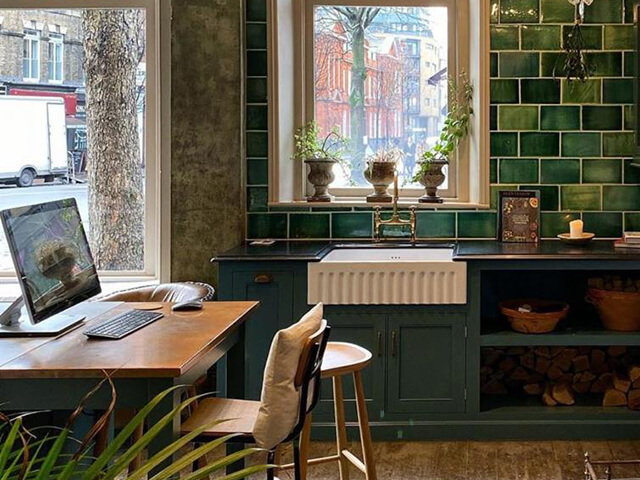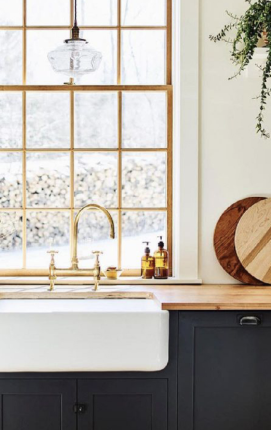The story of the humble tile is a long one, spanning all of the great civilisations and cultures for thousands of years. Tiles can be found in some of the earliest buildings ever constructed in Mesopotamia, widely considered to be the first civilisation, and ancient Egypt.
Although decorative, tiles were valued for their functionality and extreme durability, with a well-fired glazed tile enduring long after wood has rotted and metal corroded. European Clay tiles were covered with a white glaze made from lead oxide to which tin oxide had been added. This turned the original transparent lead glaze into an opaque white glaze, and works in a similar way to the glaze we apply to every Shaws sink. The hygienic, waterproof properties of glazed tiles meant they naturally gravitated towards the kitchen and bathroom areas, and in particular around our sink to protect the walls from being splashed. This led to the birth of the ‘splashback’ as we know it today, which is often as much an area for creative expression as it is a practical wall covering. With so many different types of tiles to choose from, the area around the sink has the potential to really become a focal point in any design scheme. Think of the tile in the same way as wallpaper but with practical benefits. They have the same potential to either dictate or subtly compliment the look of a room.
BOLD PATTERN
Whether you prefer the floral motifs of artists like William Morris of the Arts and Crafts Movement, or the bright geometric Moorish inspired tiles randomly scattered for that Moroccan/Spanish kitchen aesthetic, you can really be bold with pattern. Tiles featuring more modern geometric designs can often be fitted together to form a larger pattern. An elegant striped pattern can quite easily become a dazzling zig-zag pattern with a simple 90 degree tile rotation, so experiment and have fun.





